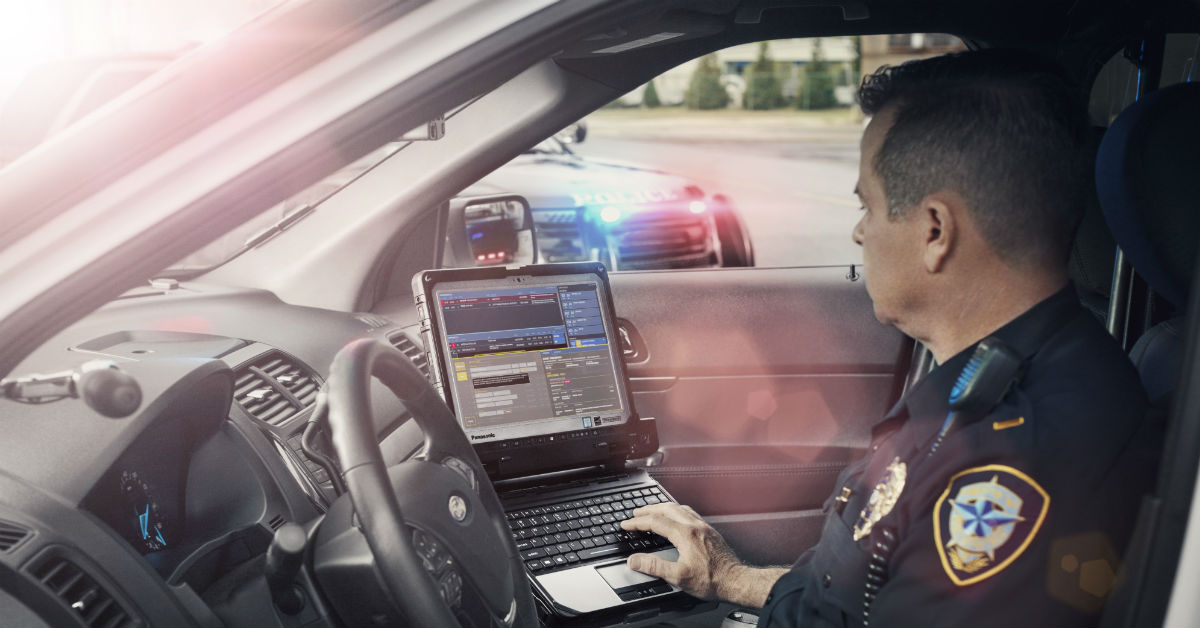BYOD or Agency-Owned Rugged Devices? How to Choose for Law Enforcement
As technology changes, the way work is done in law enforcement does too. At the top of the list of tech trends is the use of mobile rugged devices in public safety and policing. Equipping officers with mobile technology helps them access, send and receive the right information at the right time. The result: greater situational awareness and improved efficiency in the field.
As agencies recognize the value of empowering officers through mobile devices, this trend is becoming an industry standard. The right rugged devices can replicate and extend in-vehicle computer functionality to officers on foot in the field, replace many single-purpose tools and ensure constant access to mission-critical information.
Law enforcement agencies can equip officers with mobile devices in two ways: deploy a bring your own device (BYOD) policy or create an agency-owned rugged devices strategy.
BYOD in Law Enforcement
A BYOD approach allows officers to use their own mobile devices — which are often personal, consumer-grade smartphones or tablets — to conduct business. They can send and transfer photos, obtain search warrants, connect with other officers in the field, file reports and more from personal devices.
The Benefits of BYOD
Flexibility: A department-wide BYOD policy allows officers to choose the device and wireless carrier they prefer, bringing the brand or model they’re most comfortable with into the field.
Convenience: Because officers are likely to carry a personal device on them anyway — even if their employer issues an agency-owned device — BYOD can reduce the amount of technology they have to carry and manage throughout the day.
Cost: Finally, in a BYOD environment, the user often covers the device and wireless plan costs instead of the law enforcement agency.
The Drawbacks of BYOD
Financial management: While BYOD may seem like a simple way to quickly connect field officers to mobile technology, it also poses several obstacles. Depending on your agency’s BYOD policy, officers might need to pay upfront for their devices. However, you may need to issue and track monthly stipends to reimburse a portion of those expenses.
Lack of durability: When officers use their own devices, some people may be using brand new devices while others rely on technology that’s half a decade or more old. Most personal smartphones are also off-the-shelf, consumer-grade devices. They’re not built to withstand intense outdoor environments (rain, snow, dust, extreme hot or cold, etc.) or endure impact when they’re dropped, stepped on or kicked.
Possible spotty wireless coverage: Based on the capabilities of the carriers they choose, wireless coverage will also vary from officer to officer, even in the same location.
Managing software updates: In addition to selecting their own device and carrier, officers are also responsible for maintaining and updating devices under a BYOD policy. This leads to inevitable variances in tools and operating systems, which can create difficulties when rolling out new agency technology.
Security: Because the device serves a personal and professional purpose, blurring the line between on-duty and off-duty communication, security is a vital consideration as well. The BYOD approach can conflict with the FBI’s CJIS requirements and create security concerns when it comes to protecting an officer’s personal information. Most importantly, officers are collecting crime scene- and mission-related data on their personal devices, or are texting data that should be encrypted. In some cases this can result in having their personal devices taken from them.
Distractions: Officers can easily get distracted by applications on their personal devices like Facebook or Netflix. This has become increasingly problematic for many agencies, resulting in distracted officers or slower response times. Since these are personal devices, agencies cannot regulate the apps installed on them.
Agency-Owned Rugged Devices in Law Enforcement
Taking an agency-owned approach to mobile technology means that your department issues standard rugged devices to all officers for work use. Everyone receives the same type of device and relies on the same carrier. The agency is responsible for managing, updating, paying for and replacing police technology designed for the job at hand.
The Benefits of Agency-Owned Rugged Devices
Centralized device management: With all users relying on the same wireless carrier and rugged devices, deployment and management are faster and easier. Many disparate digital tools, such as body cams, digital cameras, audio recorder and GPS units, can often be replaced with a single agency-owned device designed for use by law enforcement. Agencies can dictate which mission critical apps are on all devices, as well as block any apps that may be distracting to their officers. They can also control which apps are used by different groups within the department, like patrol officers, motor officers, detectives and C-level personnel.
Consistency: Applications and functionality are the same from device to device, making maintenance and upgrades simple for the department that handles them (often IT or another internal department). As new applications are rolled out, IT can use enterprise mobility management or mobile device management tools to test and push/pull the applications across all devices as needed.
Durability: If your agency chooses a rugged device made for the law enforcement field, then officers won’t have to worry about phones being easily damaged. They can take the devices with them and trust that they’ll withstand the rigors of the workday, whatever it may bring.
Compliance: Agency-owned devices also make CJIS compliance management much simpler. Officers can confidently use devices to access and store sensitive criminal justice information.
The Drawbacks of Agency-Owned Rugged Devices
When considering a rollout of agency-owned devices, there are a few sticking points to keep in mind.
IT resources: Because the devices belong to the department and not the user, they require more time and hands-on involvement from internal resources, such as IT. If this role is new to them, then they may need training before they’re ready to oversee the initiative.
Upfront costs: There’s also a cost associated with getting started. The agency will need to purchase devices and accessories, to start. Despite these expenses, most law enforcement agencies find agency-owned devices to be more cost effective than paying monthly stipends in the long run.
Learning curve: Lastly, officers may require coaching so they’re ready to use agency-owned devices in the field, especially if they’re not familiar with the platform.
BYOD Versus Agency-Owned Rugged Devices: How Can You Decide?
Before you choose between a BYOD policy and agency-owned devices, ask yourself these questions about your department and officers:
- Do we need faster, easier ways to roll out updates and apps?
- Do we need to improve FBI CJIS compliance?
- Do our officers struggle with coverage/dead zones on personal devices?
- Is security a concern for officers who use personal phones?
- Do we spend a lot of money on monthly reimbursements for personal device usage?
- Do our officers struggle with device durability or failure in the field?
- Do our officers have to manage multiple disparate devices?
If you answer ‘yes’ to most or all of these questions, then an agency-owned device strategy will likely strengthen your department. If you answer ‘no,’ then a BYOD policy may meet your needs.
No matter which path you choose, however, one thing is clear: To do their jobs effectively, law enforcement officials need access to rugged, reliable devices they can use wherever they go.
Learn more about Panasonic Connect’s technology solutions for law enforcement.
![]()


